Disclosure: This article contains affiliate links. We may earn a commission from purchases at no extra cost to you, which helps our travel content.
There's something about marketplaces that draws in the investigative mind. The hustle, the stories woven between vendor stalls, the subtle negotiations happening in corners – it's a microcosm of human interaction that feels oddly familiar to someone who's spent years piecing together puzzles of human behavior. Faisalabad, Pakistan's textile powerhouse, wasn't initially on my radar until a photography contact mentioned its kaleidoscopic fabric markets that remain largely uncaptured by Western photographers. As someone who transitioned from tracking people to tracking light and composition, I found the proposition irresistible. What followed was a week-long immersion into a world where threads tell stories more complex than any case file I've handled. This isn't your typical tourist destination, but for photographers seeking authentic cultural documentation, Faisalabad's markets offer a masterclass in color, composition, and human connection.
The Investigator's Approach to Market Photography
My background as a PI has fundamentally shaped how I approach travel photography, particularly in bustling marketplaces like those in Faisalabad. Where tourists see chaos, I see patterns. Where they feel overwhelmed, I spot opportunities. The key is methodical observation before even reaching for your camera.
I spent my first day in Faisalabad's markets without taking a single photograph. Instead, I observed traffic patterns, noted when light streamed through market canopies at different hours, and identified the characters who seemed central to market operations. This reconnaissance pays dividends when you finally start shooting.
For market photography specifically, I've found my Sony Alpha a7 III paired with a versatile 24-70mm lens offers the perfect balance of flexibility and low-light performance. Markets demand adaptability – one moment you're capturing wide-angle scenes of fabric rolls cascading from stalls, the next you're focusing on the weathered hands of an artisan threading a loom.
Faisalabad's textile markets present unique challenges. The contrast between shadowy stall interiors and sunlit corridors tests your camera's dynamic range. The vibrant textiles demand color accuracy. And perhaps most challenging, capturing authentic moments requires building rapport with vendors who may initially be camera-shy or suspicious of a foreigner with professional equipment.
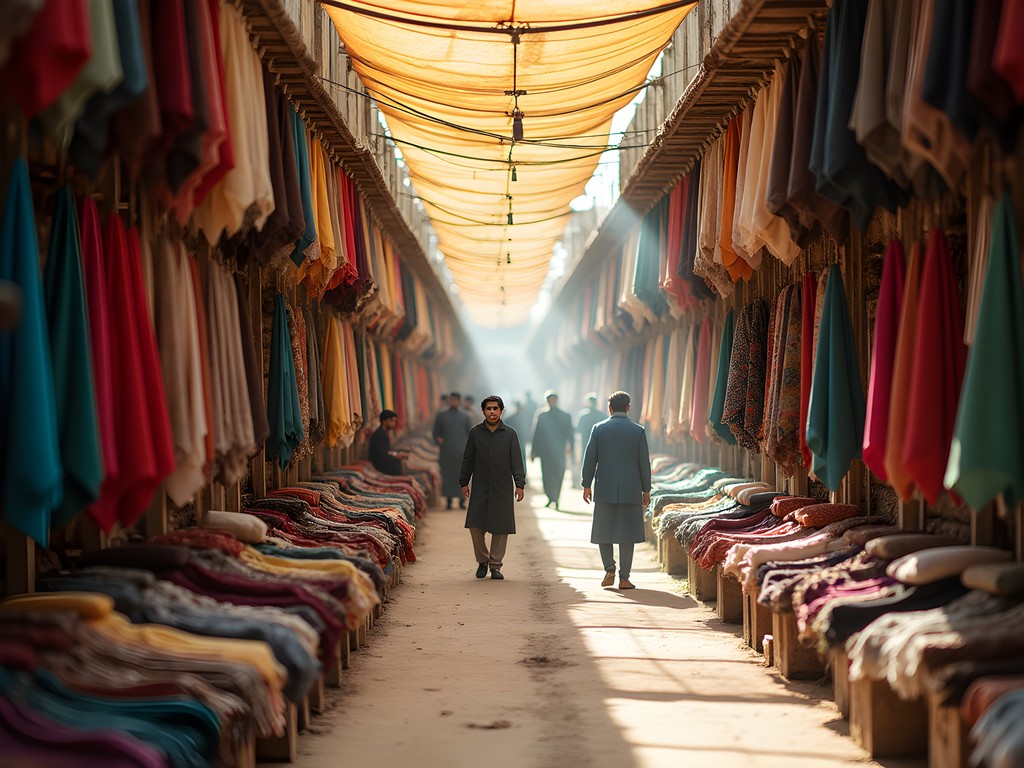
💡 Pro Tips
- Spend at least one day observing without photographing to understand market rhythms
- Early morning (7-9am) offers the best light as it filters through market canopies
- Carry small local currency denominations to purchase sample textiles - vendors are more receptive to photographers who are also customers
Ghanta Ghar Cloth Market: The Textile Heart of Pakistan
If Faisalabad is Pakistan's textile center, then Ghanta Ghar (Clock Tower) Cloth Market is its beating heart. Established during British colonial rule, this sprawling marketplace has evolved into a labyrinth of fabric vendors, each stall more colorful than the last. For photographers, it's visual overload in the best possible way.
The market's architecture itself tells a story – narrow corridors suddenly open into courtyards, light plays through makeshift canopies, and the iconic clock tower provides a central reference point that appears and disappears as you navigate the maze. I found myself returning here three separate mornings, each time discovering new visual narratives.
What struck me most was the tactile nature of commerce here. Unlike the sterile shopping experiences we've grown accustomed to in the West, fabric purchasing in Faisalabad is a full sensory experience. Customers run fabrics between fingers to assess quality, hold silks up to the light to evaluate transparency, and negotiate prices with theatrical flair that makes for compelling candid photography.
For close-up textile shots that capture the intricate weaves and patterns, I relied heavily on my macro lens. The detail it reveals in hand-embroidered fabrics is remarkable, allowing me to document craftsmanship that has remained largely unchanged for generations.
A word of caution: the market can be overwhelming for first-time visitors. The sensory input – vibrant colors, persistent vendors, the scent of chai and street food, honking motorbikes navigating impossible spaces – requires some adjustment. I recommend starting early when the crowds are thinner and the light more manageable for photography.
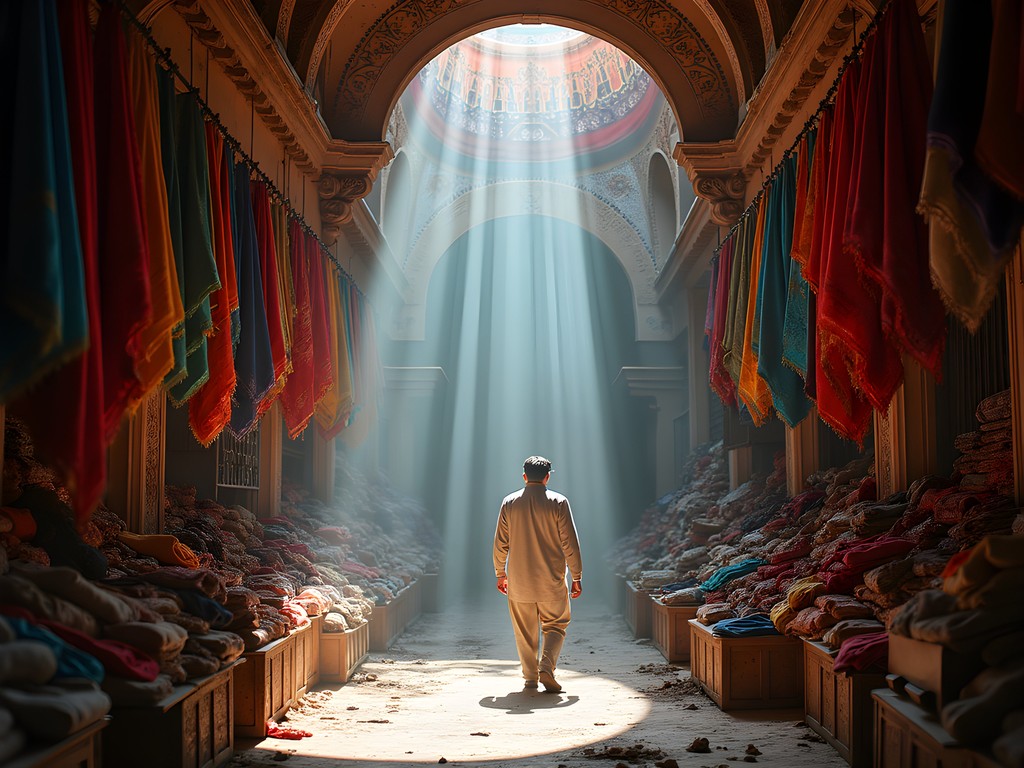
💡 Pro Tips
- Visit on Tuesday mornings when new textile shipments arrive and vendors display their best merchandise
- Look for the second floor vantage points around the clock tower for establishing shots of the market
- Bring a polarizing filter to manage reflections from glossy fabrics like silk and satin
The Human Element: Portraits of Textile Artisans
While the textiles themselves are visually stunning, it's the people behind them that give Faisalabad's markets their soul. As someone accustomed to observing human behavior, I found the artisans and vendors to be the most compelling photographic subjects in the city.
Gaining access for portraits required a different investigative approach. I began with small purchases, showing genuine interest in the craft, and only gradually introducing my camera. The instant printer I brought along proved invaluable – being able to instantly print and give portraits to subjects transformed suspicion into enthusiasm and opened doors throughout the market.
One particularly memorable encounter was with Rashid, a third-generation loom operator whose family has worked the same market stall since partition. His hands told a story that words couldn't – calloused, dyed with faint traces of indigo, and possessing an intuitive knowledge of how threads should feel. When photographing craftspeople like Rashid, I focus on these details – the hands, the eyes, the tools of their trade – rather than just standard portraits.
The women working in the embroidery sections presented both a challenge and opportunity. More conservative and initially camera-shy, they required additional time to build trust. I found that showing them my bird photography from the Seychelles created an unexpected connection – many were curious about life beyond Pakistan and appreciated that I was there to document their craft with respect rather than as exotic curiosities.
Lighting for portraits in the markets requires adaptability. I relied heavily on a small LED light panel that could fill shadows without being intrusive. For environmental portraits showing artisans in their workspaces, I often shot at a wider aperture to maintain focus on the subject while suggesting the colorful chaos of their surroundings.
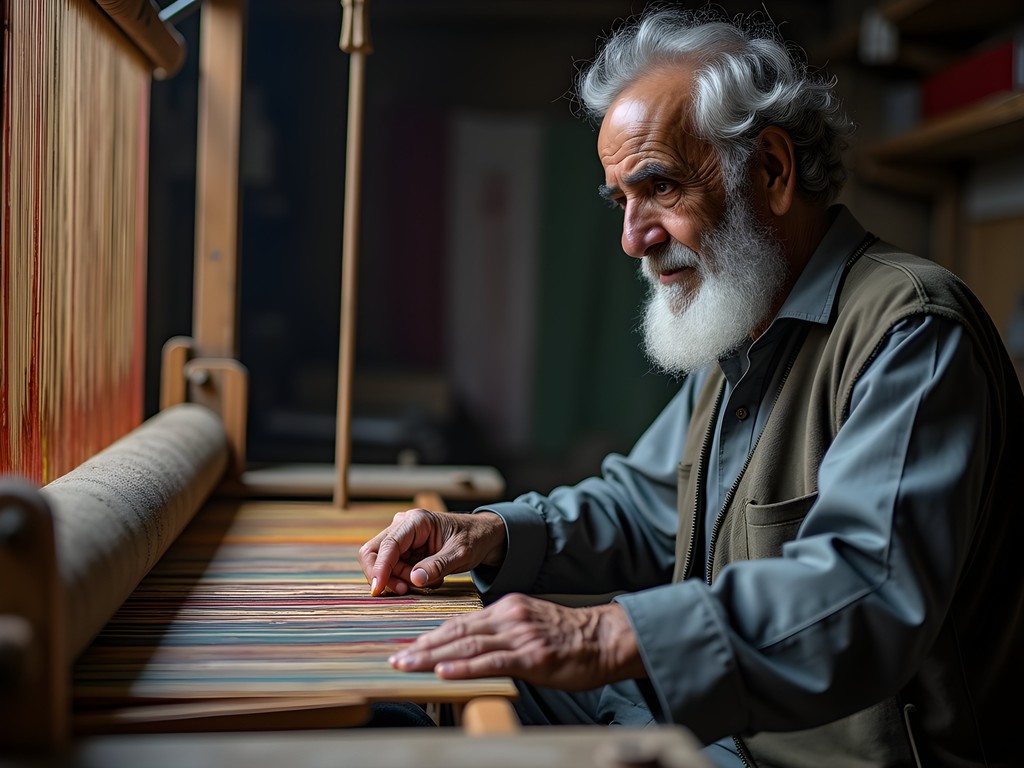
💡 Pro Tips
- Learn basic Urdu greetings and 'may I take your photo' phrases to show respect before photographing people
- Carry small prints from previous days to show potential subjects – it builds trust in your intentions
- Focus on hands and tools when subjects are uncomfortable with direct facial portraits
Beyond the Markets: Faisalabad's Industrial Legacy
While the markets offer the most accessible photography, understanding Faisalabad's complete textile story requires venturing into its industrial zones. The city earned its nickname 'Manchester of Pakistan' for good reason – massive textile mills dominate the landscape and economy.
Accessing these facilities requires advance planning and permission. My investigative background helped navigate bureaucracy, but any photographer can arrange visits through local textile associations with sufficient notice. The visual contrast between the artisanal market production and industrial-scale manufacturing creates a compelling visual narrative about tradition meeting modernity.
The Lyallpur Museum (Faisalabad was formerly known as Lyallpur) offers another photographic opportunity, housing vintage textile equipment and historical photographs that document the evolution of the industry. The museum's lighting is challenging – a combination of harsh fluorescents and limited natural light – so I relied heavily on my camera's dynamic range and post-processing skills.
For photographers interested in architectural elements, the colonial-era mill buildings feature fascinating industrial design. Early morning fog often envelops these structures, creating moody scenes that speak to the city's industrial heritage. I found myself drawn to the geometric patterns of these buildings – rows of windows, smoke stacks, and water towers that punctuate the urban landscape.
One unexpected photography opportunity came from the contrast between old and new production methods. In one facility, I photographed computer-controlled looms creating intricate patterns in seconds that would take artisans days to complete by hand. These juxtapositions tell the story of an industry in transition and raise questions about the future of traditional craftsmanship.
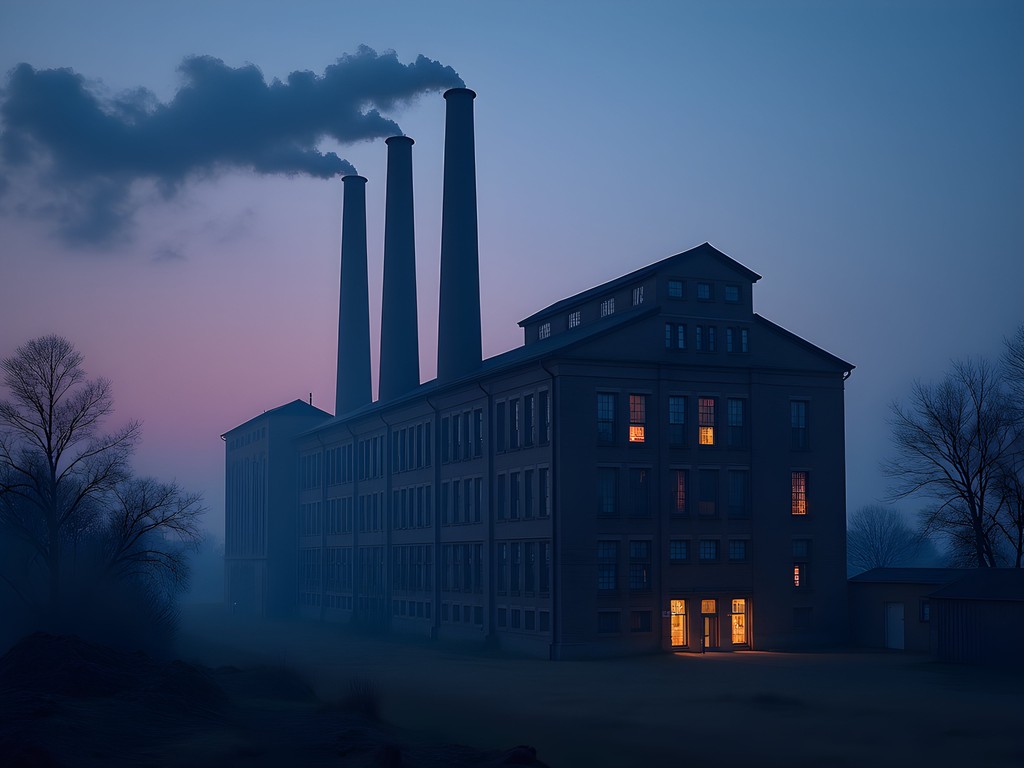
💡 Pro Tips
- Contact the Faisalabad Chamber of Commerce at least two weeks before arrival to arrange mill visits
- Bring lens cloths and protective gear for your camera – active mills have significant dust and fiber in the air
- The best exterior industrial photography happens during the 'blue hour' just before sunrise
Technical Challenges: Photographing Color and Chaos
Faisalabad presents unique technical challenges for photographers. The markets are a riot of color that can easily overwhelm both your camera's sensor and the viewer's eye. Creating compelling compositions amidst such visual chaos requires discipline and technique.
I approach colorful markets with a strategy borrowed from my investigative days: identify patterns and isolations. Rather than trying to capture everything, I look for natural frames, repetitive elements, or striking color contrasts. A vendor arranging fabric bolts by color gradient. A shaft of light illuminating a single blue silk scarf against a shadowy background. These isolated moments tell the market's story more effectively than busy wide shots.
Color management becomes critical in textile photography. I shoot in RAW exclusively and use a color calibration tool to ensure accurate color reproduction. This is particularly important when documenting textiles whose value lies precisely in their specific hues and patterns. The markets' mixed lighting – from daylight filtering through canopies to fluorescent stall lighting – creates white balance challenges that require careful attention during post-processing.
Movement presents another challenge. Markets are kinetic environments with constant motion. I've found that embracing this energy rather than fighting it yields more authentic images. Slow shutter techniques that show the blur of activity around a static subject can convey the market experience more truthfully than freezing every moment.
Perhaps the greatest technical challenge is working in cramped, crowded spaces with limited ability to position yourself ideally. This is where compact equipment shines. While I normally prefer my full-frame system, there were numerous situations where my backup compact camera allowed me to capture moments in tight quarters where a larger camera would have been intrusive or impossible to maneuver.
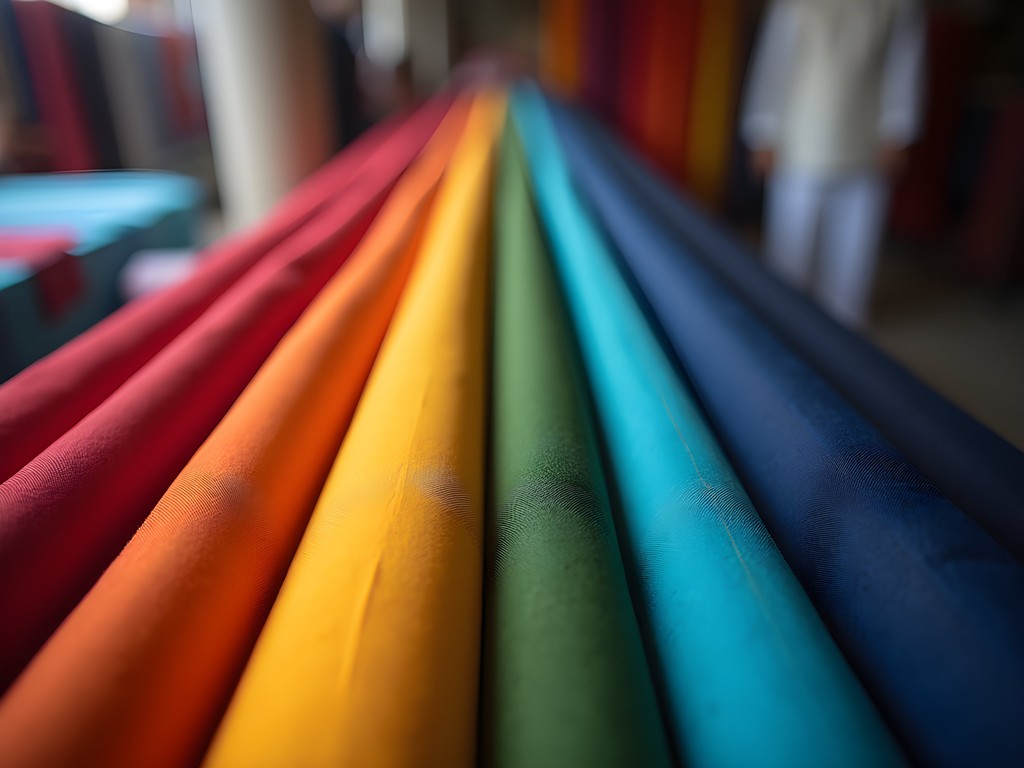
💡 Pro Tips
- Use spot metering and expose for the highlights when shooting colorful textiles to preserve detail
- Shoot at f/8 or narrower when capturing market scenes to maintain depth of field across fabric displays
- Create a custom white balance preset specifically for the mixed lighting conditions of indoor markets
Final Thoughts
Faisalabad may not appear on typical travel photography itineraries, but for those willing to venture beyond the usual circuit, its textile markets offer visual riches that rival any global destination. As someone who's photographed luxury resorts in the Seychelles and high-end shopping in Dubai, I found an unexpected authenticity in these working markets that produced some of my most compelling portfolio additions. The city challenges you as a photographer – to find order in chaos, to connect with subjects across cultural divides, to capture colors that seem almost too vibrant to be real. But in these challenges lies the reward: images that tell stories of craft, commerce, and continuity that have remained largely untold in Western photography. Whether you're a seasoned travel photographer or someone looking to develop your visual storytelling skills, Faisalabad's textile markets offer a masterclass in documentation that goes beyond the surface. Pack light, prepare thoroughly, and approach with respect – the textile tales of Faisalabad await your lens.
✨ Key Takeaways
- Faisalabad's markets require preparation and patience – spend time observing before shooting
- Building relationships with vendors and artisans opens photographic opportunities closed to casual visitors
- Technical challenges of color accuracy and mixed lighting can be overcome with proper equipment and technique
- The contrast between traditional craftsmanship and industrial production creates compelling visual narratives
📋 Practical Information
Best Time to Visit
October-November (fall) when temperatures are moderate and festival season brings additional textile displays
Budget Estimate
$40-60/day excluding flights (accommodations, food, and local transportation are very affordable)
Recommended Duration
5-7 days minimum to properly explore markets and production facilities
Difficulty Level
Intermediate - Language Barriers And Navigation Challenges Require Some Travel Experience


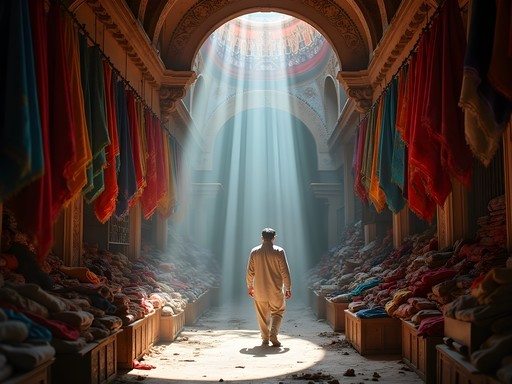

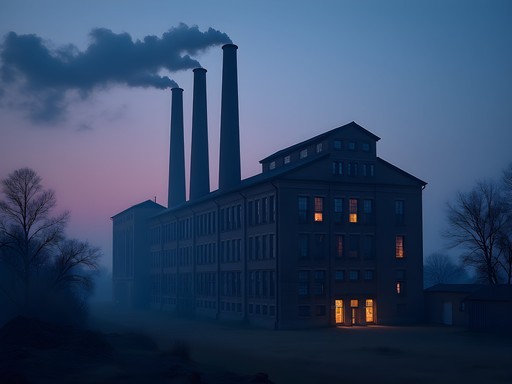
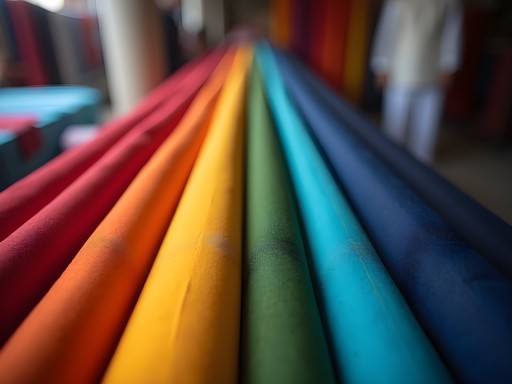


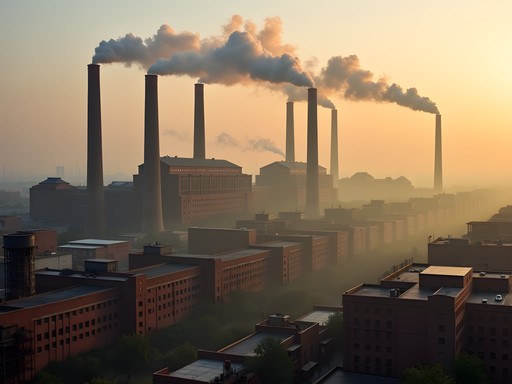
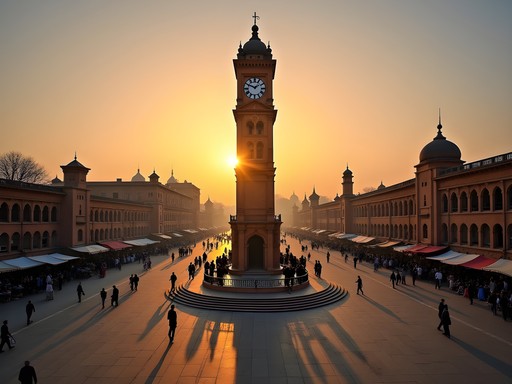






Comments
cityrider
Just got back from Pakistan two weeks ago and wish I'd seen this before going! We skipped Faisalabad for Lahore, but those textile markets look incredible. The portrait of the old weaver with his hands on the loom is absolutely stunning. Did you find language to be a barrier when interacting with the artisans?
oceanexplorer
How was your overall experience in Pakistan? Been on my list forever but keep putting it off.
cityrider
Honestly, it was amazing! People were incredibly hospitable, food was fantastic, and it felt much safer than media portrays. Language wasn't a huge issue in cities - many people speak some English. Definitely don't put it off!
vacationzone
Great post! What camera settings did you use for those indoor market shots? They're so crisp despite the low light!
Hannah Woods
Douglas, your approach to market photography is brilliant. I spent three weeks backpacking through Pakistan last year and Faisalabad's textile markets were a highlight. The way you've captured the artisans' hands tells such powerful stories. I found that visiting early morning (around 7-8am) gave the best light and fewer crowds for photography. The section about the industrial legacy particularly resonated - there's such a fascinating contrast between the traditional handlooms and the modern factories. Did you have any issues with permission when photographing the workers? I found most people incredibly welcoming but occasionally needed to navigate some sensitivity.
vacationzone
Hannah, did you need any special permits to photograph in the markets? Planning a trip there next spring and wondering about photography restrictions.
Hannah Woods
No special permits needed for the markets, but I always asked permission before photographing people. Having a local guide helps tremendously - mine explained my intentions to vendors which made everything smoother. I used my camera bag which didn't scream 'tourist' and kept my gear safe in the crowded areas.
oceanexplorer
These photos capture so much life and color! Makes me want to visit Faisalabad now. Never thought of Pakistan as a photography destination before.
Hannah Woods
Pakistan has some of the most photogenic markets I've ever experienced. Completely underrated destination for photographers!
oceanexplorer
Did you feel safe traveling there as a solo female traveler?
waveone
Just got back from Faisalabad last month and your post perfectly captures what makes those markets special. I was overwhelmed by the sensory experience - the clicking of looms, shouts of vendors, smell of dyes, and those incredible colors everywhere. Did anyone else notice how the textile patterns seem to reflect local architectural designs? I started seeing the same motifs on buildings that I saw on fabrics. Bought way too many scarves and fabric pieces as souvenirs!
photoone
That shot of the old man with threads wrapped around his fingers is stunning. The storytelling in one frame!
adventureway
If anyone's planning to visit, don't miss the early morning activity at Ghanta Ghar! I got there around 6:30am and watched the market come to life. The morning light streaming through the fabric stalls creates amazing photo opportunities. Also, the chai shops around the clock tower serve the best breakfast paratha I've had anywhere in Pakistan.
Claire Hawkins
Your section on 'The Human Element' really resonated with me. When I visited with my family, my 12-year-old daughter was fascinated by the artisans hand-weaving intricate patterns. We were invited to try the looms ourselves, resulting in some hilariously uneven fabric! What struck me most was how the craft passes through generations - we met a teenager working alongside his grandfather, both using techniques centuries old. Douglas, did you find any particular stories from the artisans especially moving? The markets are loud and chaotic but there's such humanity in those interactions.
hikingstar
Is Faisalabad safe for solo travelers? I've been wanting to explore Pakistan but keep hearing mixed things about safety. Your photos make me want to go even more!
waveone
I went solo last year and had no issues. Just use common sense like anywhere else. The textile markets are busy and very safe during the day. Pakistanis are incredibly hospitable!
hikingstar
That's reassuring, thanks! Did you need a guide or were you able to navigate on your own?
waveone
I hired a local guide for the first day to get oriented, then explored on my own. Having someone explain the textile production process made a huge difference in appreciating what I was seeing.
Savannah Torres
Douglas, your approach to capturing the human stories behind these markets is exactly what travel photography should be about. I visited Faisalabad with my family last year and was mesmerized by the textile scene, but struggled to capture it properly. The lighting inside those markets was challenging! My kids were fascinated by the fabric dyeing process - watching those huge vats of color was like a science lesson come to life. Did you find the vendors welcoming to photographers or did you need to establish rapport first?
photoone
I'm curious about this too! Planning a photography trip to Pakistan next spring.
Douglas Murray
Thanks Savannah! Definitely had to build rapport first. I spent the first day just walking around without my camera, buying small items and chatting with vendors. By day two, most were comfortable with me photographing. The lighting is tricky - I used my prime lens for most indoor shots to handle the mixed lighting conditions.
Venture X
Premium card with 2X miles, $300 travel credit, Priority Pass